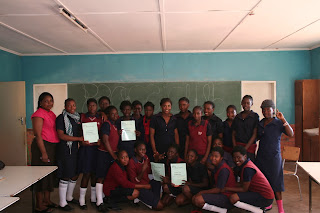From Student to Storyteller
We began by
breaking down the term bullying into 4 types: physical, relational, cyber and
verbal. As we delved into each of these, the simple and over arching word bullying
became increasingly more specific and relatable. Although, it’s easier to stand
from the sidelines and categorize others as “the big bad bully” since you’ve
never actually thrown a punch at a fellow classmate, it takes a lot more
courage to admit the subtle things we all do on a daily basis that hurt others.
So I prodded them with simple questions, and I shared some experiences of my
own. And all of a sudden, the room
quickly transformed into an open forum on bullying. It seemed as if every
person had a story to share about the mistakes they have made as an offender,
or the pain that they have endured as a victim. I marveled at the way a once quiet classroom could be so
willing to share and indulge in the supportive community around them.
Especially, on a topic which is makes each person so vulnerable.
More
and more, I am seeing the ways that Peace Clubs acts as an outlet for people to
not only share their story, but to feel like that story matters. By creating an
atmosphere for students that encourages freedom of speech, we allow the opportunity
for students to see the change needed on their own terms. When each student can
look around the classroom to see others nodding their heads in agreemen,t or
sharing similar stories of their own, they can’t help but feel like their life
and experience has the power to change others. Each student becomes their own storyteller, and through that,
they can begin to see the change that is needed in themselves, rather than through
fear inflicting lectures and punishments by authority figures. After telling
her story from years of being a bully, Mapuwo Chip, a member of Peace Clubs comes
to the realization, “Peace clubs teaches us not to find the bully, but to find
the root cause of the bullying and then find the solution. It also teaches us
not to remain the same, but to change.” Similarly, Daphne Chimmkaam, the president of Peace Clubs at
Macha Girls says, “Before I joined the Peace Club I always thought I could
bully people who are younger than me; because, I thought I was big, but all I got was hatred from all my
mates”
Peace Clubs feeds the innate
desire every person has to express themselves. Whether it be through the story telling and dramas we had in
that Peace Club session, or the testimonies each student wrote to us; we are
placing value to their thoughts and opinions. This will be invaluable to each
of them as they grow and develop as members of their community. Daphne
concludes, “Peace club has taught me a lot. It has taught me how to live with my
friends and family (sic), it has taught me the right way to express my
feelings. I believe that we are going to promote peace in our families and
communities and at large the nation”



Comments
Post a Comment